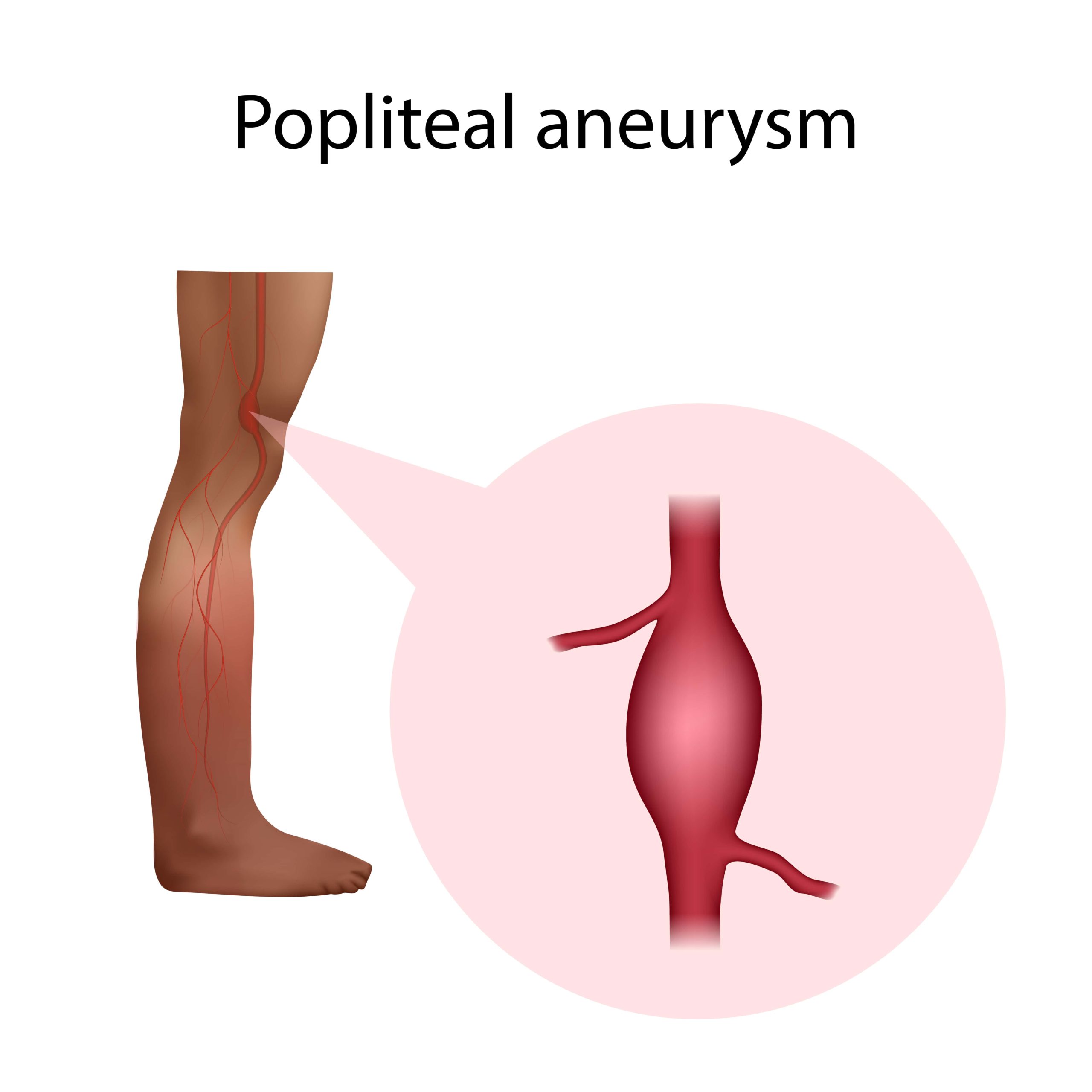Popliteal Artery Aneurysm – Treatment and Symptoms


Overview
The popliteal artery that supplies blood to the knee joint, thigh, and calf, may develop a popliteal artery aneurysm, which causes bulging and weakening in the vessel wall. When a popliteal aneurysm ruptures, it can result in life-threatening, uncontrollable bleeding. A blood clot caused by the aneurysm might necessitate the amputation of the limb.
Popliteal artery aneurysms, like other aneurysms, have an unknown origin. Molecular research suggests that a mix of genetic flaws and inflammatory processes may be to blame. Atherosclerosis causes a pathological dilation of the artery by increasing flow turbulence distal to a stenosis. Aneurysms are thought to occur as a result of decreased wall strength caused by inflammatory cell infiltration.
Request an appointment at Apollo Hospitals
About Popliteal Artery Aneurysm
An arterial aneurysm is a condition in which an artery swells to 50% of its normal size. A popliteal aneurysm is an inflammation of the popliteal artery, one of your leg’s major arteries. The popliteal artery runs behind the knee joint.
Popliteal aneurysms are unknown in their specific etiology. However, atherosclerosis may play a part. A popliteal aneurysm can also be caused by trauma to the artery.
A popliteal aneurysm’s significant danger is a rapid loss of blood flow to the lower leg. Popliteal aneurysms can cause irreparable nerve damage and gangrene (due to a lack of oxygen to the nerves and muscles in the leg), resulting in limb loss and life-threatening sepsis, and multi-organ failure, if left untreated. Aneurysms in the popliteal artery can rupture, causing severe internal bleeding in the leg.
The prognosis is favorable for individuals who have a popliteal artery aneurysm repaired electively. In the near term, the outcomes of surgery and endovascular procedures seem to be equal. The long-term prognosis of endovascular treatment for a popliteal artery aneurysm, on the other hand, is unclear.
The prognosis for people who have a ruptured popliteal artery aneurysm is typically unfavorable. Limb amputation is a common event. Amputations can take place above or below the knee. The only approach to improve these dismal results is to examine all patients’ pulses extensively.
What are the symptoms of popliteal artery aneurysm?
Many popliteal aneurysms go undetected. Symptoms that are common include,
- Pain at the back of the knee
- Lower leg edema (swelling due to fluid retention)
- Injuries to the feet
- Unhealed ulcers on the soles of the feet
When to see a doctor?
It’s crucial to check the patient’s contralateral leg and abdomen for a popliteal artery aneurysm. All individuals with a pulsatile mass behind the knee should have an ultrasound performed by a radiologist.
A multidisciplinary approach to identify and manage results in better results and lower morbidity.
Request an appointment at Apollo Hospitals
Call 1860-500-1066 to book an appointment
Who is at risk of developing a popliteal artery aneurysm?
You may be at risk for a popliteal aneurysm if you,
- Have high cholesterol levels
- Smoke
- Have high blood pressure
- Have got a bacterial infection
- Had blood vessel reconstruction in one or both of your legs
What are the treatments available for popliteal artery aneurysms?
The following two significant factors need to be considered for the treatment:
Asymptomatic
Popliteal aneurysms are frequently bigger than 2.5cm, posing a significant risk of clotting and subsequent consequences. They should be evaluated for use as a preventative measure.
Symptomatic
When a popliteal aneurysm causes a blood deficit in the leg, it presents an emergency. It should be treated as a high-risk wound regardless of its size to avoid amputation of the lower leg.
Popliteal artery aneurysms have traditionally been treated surgically using open bypass methods. However, endovascular methods/keyhole surgery can be utilized to stent-graft (fabric lined metal mesh) through the popliteal artery aneurysm. Your health, age, and the intricacy of the intervention required will all influence your treatment.
Conclusion
Popliteal artery aneurysms may be more common than previously thought. It poses a significant threat to the patient’s limb function and viability, as well as their life.
It’s linked to typical cardiovascular risk factors, and it commonly coexists with aneurysmal illness in other parts of the body. The gold standard for therapy is open ligation and bypass with the greater saphenous vein. However, new endovascular methods have become a vital part of the armamentarium for intervention in both emergency and elective settings.
Frequently Asked Questions (FAQs)
How is a popliteal artery aneurysm diagnosed?
Popliteal artery aneurysms can be diagnosed using various techniques, including Angiography, MRI, CT scan, and ultrasound.
Can popliteal aneurysms be treated without surgery?
Popliteal aneurysms are usually treated with surgery. Typically, your surgeon will build a bypass around the aneurysm’s location in the artery.
It’s critical that you regularly monitor your blood pressure, and if required, take medication to control it.
© Copyright 2024. Apollo Hospitals Group. All Rights Reserved.
 +91 8069991061
Book Health Check-up
Book Health Check-up
Book Appointment
Book Appointment
+91 8069991061
Book Health Check-up
Book Health Check-up
Book Appointment
Book Appointment







